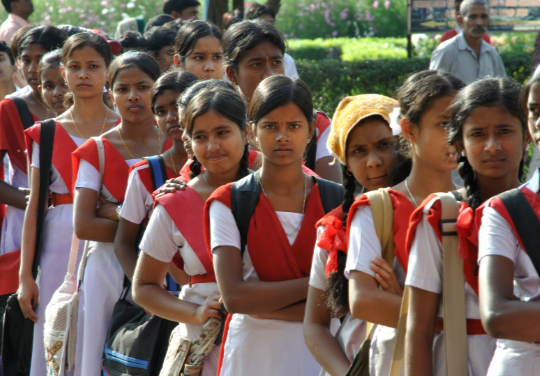In India, three out of every four working children denied right to education: NGO

- Country:
- India
Three out of every four working children in India are virtually denied of their right to education, said an NGO, adding that majority of them are engaged in agriculture and related industries. Going by the census 2011 data-sets released in 2016, a whopping 62.5 per cent of working children and adolescents below 18 years of age are engaged in agriculture and related industries.
In absolute numbers, among 40.34 millions of working children and adolescents, 25.23 million work in agricultural sector. Among the total 40.34 million working children and adolescents within the age group of 5-19 years, only 9.9 million attend educational institutions, which means only 24.5 pc of the working children go to school, the CRY (Child Rights and You) stated after analysing the Census 2011 data on World Day Against Child Labour.
"No matter how unbelievable it sounds, the majority of working children in India do not toil in factories and workshops, or work as domestic helps or street vendors in urban areas. On the other hand, they are working in fields and farms, planting and harvesting crops, sprinkling pesticides or spraying manures, and are often tending livestock at farms and plantations," the CRY said in a statement. Census 2011 data reveals that only a miniscule percentage of children who are involved in agriculture are able to continue education, despite the provisions of the Right to Education (RTE) Act being in place, it said.
The Child Labour Law allows children under the age of 14 years to 'help' in family enterprises beyond school hours. This is fraught with far-reaching effects on children's right to learn, play and develop, as a whole, and more specifically on those who are 'helping' out their parents in agricultural work," Priti Mahara, Director of Policy Advocacy and Research at CRY said. "The underlying issues can be resolved by ensuring that children are sent to school, not to the fields. This can be achieved through adequate quality schooling, especially focussing on inclusion of children from marginalised sections along with effective monitoring and grievance redressal mechanisms, interacting with teachers, parents, community leaders and children's collectives on the importance of child education and demanding effects of child labour.
"There is also a need to empower communities with the knowledge to demand for proper implementation of livelihood schemes, food security and access to all government entitlements. And this is what we are also trying to do in CRY intervention areas," she stated. According to the recent global estimates by the International Labour Organisation (ILO), there are approximately 152 million children in child labour and seven out of every 10 working children are in agriculture.
The current trends in India reflect a very similar picture, with more than 60 per cent of children in the country being part of the economy sustained by agriculture and related activities. The ILO also considers agriculture to be the second most hazardous occupation globally, the NGO said in its statement.
(This story has not been edited by Devdiscourse staff and is auto-generated from a syndicated feed.)
ALSO READ
Czechs to give tens of millions of euros for Ukraine ammunition plan, PM says
Italy arrests 22, seizes millions in EU fund fraud case
No Labels won't run a third-party campaign after spending millions trying to recruit a candidate
First UN food supplies arrive in Sudan's Darfur after months but millions face acute hunger
Australia proposes mandatory code of conduct for supermarkets, millions in fines










